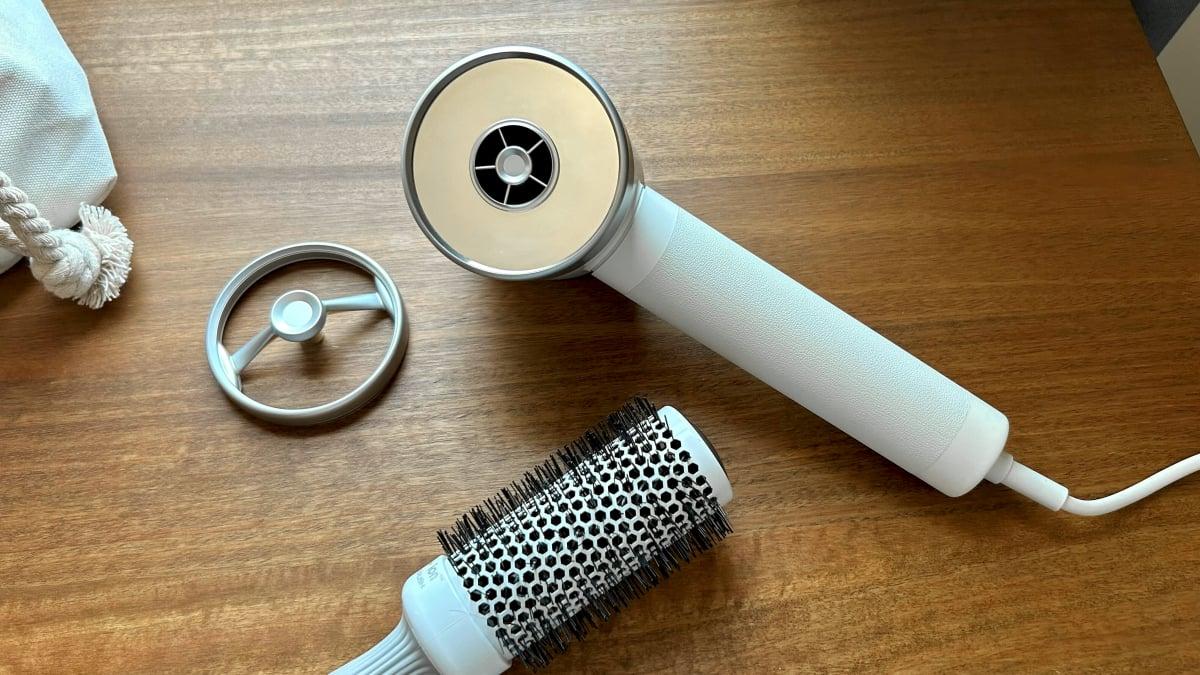Who it's for
Note: The price of the Zuvi Halo has nearly doubled on its website, from $349 to $634. We've reached out to Zuvi to get more info on the price hike, but in the meantime, we do not recommend this dryer at the new price point. Below is our review as it was written when the dryer was available for $349.
A good recreation doesn't always make for a good dupe, which is why I appreciated that Zuvi Halo didn't try to be a Dyson Supersonic. The Zuvi Halo combines the power of airflow and infrared light, which the the brand calls its LightCare technology, to speed up dry times while using less heat and minimizing hair damage. Basically, it has the same goals as the Supersonic with a different method.
If you have a higher budget and your hair health is your top priority, the Zuvi Halo was the most gentle hair dryer I tested. It consistently left me with the shiniest-looking and softest-feeling hair.
Why we picked this
Zuvi claims the LightCare tech (i.e. the ring of infrared lights used in three out of four of the styling modes) dries the surface of hair without baking it from the outside in, and while retaining inner moisture. The dryer's product page says this leads to hair that's "+38 percent shinier" and has "+109 percent internal moisture," among other parameters that are next to impossible to test independently. I can say that my hair was noticeably shinier and less crispy feeling than it usually is after heat styling — even when compared to the Supersonic.
As for drying time, without any attachments and with the assistance of a round brush, it took about 16 minutes to dry my hair as compared to the 15 minutes it took with the Supersonic. This was with the dryer's "care" setting (the remaining settings are fast, soft, and style). Each of the settings automatically adjusts the airflow and heat, leaving you with no way to pick custom settings. Someone who's more particular with their blow-dry settings might find this annoying, but I found there was enough variety between them that it didn't really hinder my ability to dry and style my hair. The hottest of the settings, fast, did feel noticeably hot, but this dryer does claim it tops out at 111 degrees Fahrenheit. That tracks — it never felt scorching, or even as hot as the Laifen Swift on its lowest heat setting.
The Zuvi Halo also comes with three magnetized attachments, including a gentle air dry attachment, a diffuser, and style concentrator. Unfortunately, both the diffuser and style concentrator block the light tech. Still, the dryer functioned well even without the full light power. Plus, the gentle air attachment lets the light through, so it's not an across-the-board flaw of all the attachments.
While some reviews praised this dryer for keeping noise down, I didn't find it to be any less quiet than the Supersonic (which is admittedly on the quieter end of hair dryers).
If you're intimated by the $349 investment of the Zuvi Halo (which is still $80 cheaper than the Supersonic), the brand does offer a 30-day return period if you're not completely satisfied with your purchase. Zuvi also offers a cordless model (priced at $499), though that price bump puts it $70 above the cost of the Dyson Supersonic.









